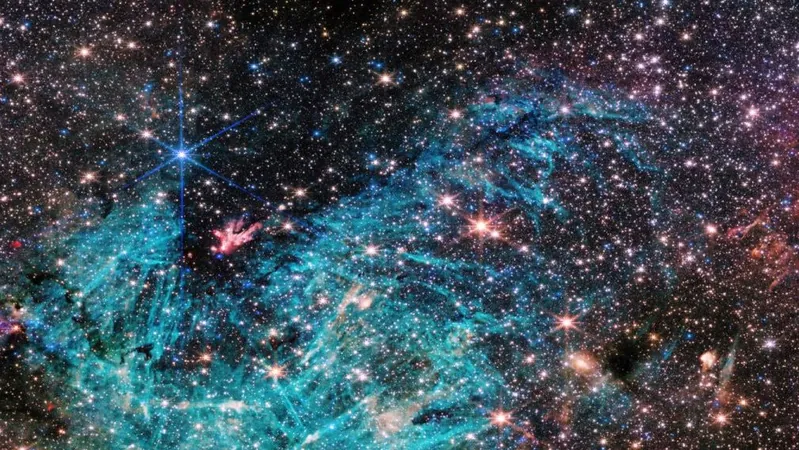
Shocking Discovery: Powerful Magnetic Fields Near Our Galaxy's Black Hole Are Stopping Star Formation!
2025-04-03
Author: Arjun
Recent findings from the James Webb Space Telescope (JWST) reveal that the heart of our Milky Way galaxy is witnessing a cosmic conundrum—despite being a nursery rich with molecular gas, the region known as Sagittarius C (Sgr C) is producing far fewer stars than expected. These stars are essential for creating the very building blocks of life, including crucial elements like carbon and oxygen. This revelation not only illuminates the mysteries surrounding star formation but also hints at the complex interplay of forces at work in this extreme environment.
Located a mere 200 light-years from the supermassive black hole Sagittarius A*, Sgr C is a region that, according to existing theories, should be teeming with star production. However, JWST's first infrared observations have uncovered unexpected structures within the nursery—long, bright, needle-like filaments of hot plasma stretching across several light-years. "We were definitely not expecting those filaments," said Rubén Fedriani, a postdoctoral researcher who contributed to the groundbreaking findings. "It was a completely serendipitous discovery."
The team hypothesizes that these filaments are shaped by powerful magnetic fields in the area. These fields are amplified by the chaotic gas movements around Sagittarius A*, which is a colossal black hole with a mass equivalent to about four million suns. The magnetic forces at play may actually be counteracting the gravitational pulls that usually lead to star formation, instead confining material to these dense structures.
John Bally, an astrophysicist leading one of the studies, noted the significance of these revelations, stating, “For the first time, we are seeing directly that strong magnetic fields may play an important role in suppressing star formation, even at small scales.” His colleague Samuel Crowe also emphasized the potential of this research area, pointing out that the influence of magnetic fields on star formation in the centers of galaxies has not been fully investigated.
Adding to the intrigue, the JWST data suggest the presence of two massive young stars located among pairs of thread-like filaments, which seem to delineate the walls of cavities carved out by powerful stellar winds. The extreme conditions in Sgr C have led to significant expulsion of star-forming material, raising concerns that this stellar nursery might completely dissipate in just a few hundred thousand years. “It's almost the end of the story,” Bally warned, highlighting the urgency of further study in star formation contexts.
This discovery opens up exciting prospects for future astronomers seeking to understand the role of magnetic fields not just in our galaxy, but potentially in others as well. The implications are vast—could these findings rewrite the cosmic narrative on how and where stars are born? Only time will tell as researchers continue to explore the mysteries lurking in the heart of our galaxy.




 Brasil (PT)
Brasil (PT)
 Canada (EN)
Canada (EN)
 Chile (ES)
Chile (ES)
 Česko (CS)
Česko (CS)
 대한민국 (KO)
대한민국 (KO)
 España (ES)
España (ES)
 France (FR)
France (FR)
 Hong Kong (EN)
Hong Kong (EN)
 Italia (IT)
Italia (IT)
 日本 (JA)
日本 (JA)
 Magyarország (HU)
Magyarország (HU)
 Norge (NO)
Norge (NO)
 Polska (PL)
Polska (PL)
 Schweiz (DE)
Schweiz (DE)
 Singapore (EN)
Singapore (EN)
 Sverige (SV)
Sverige (SV)
 Suomi (FI)
Suomi (FI)
 Türkiye (TR)
Türkiye (TR)
 الإمارات العربية المتحدة (AR)
الإمارات العربية المتحدة (AR)